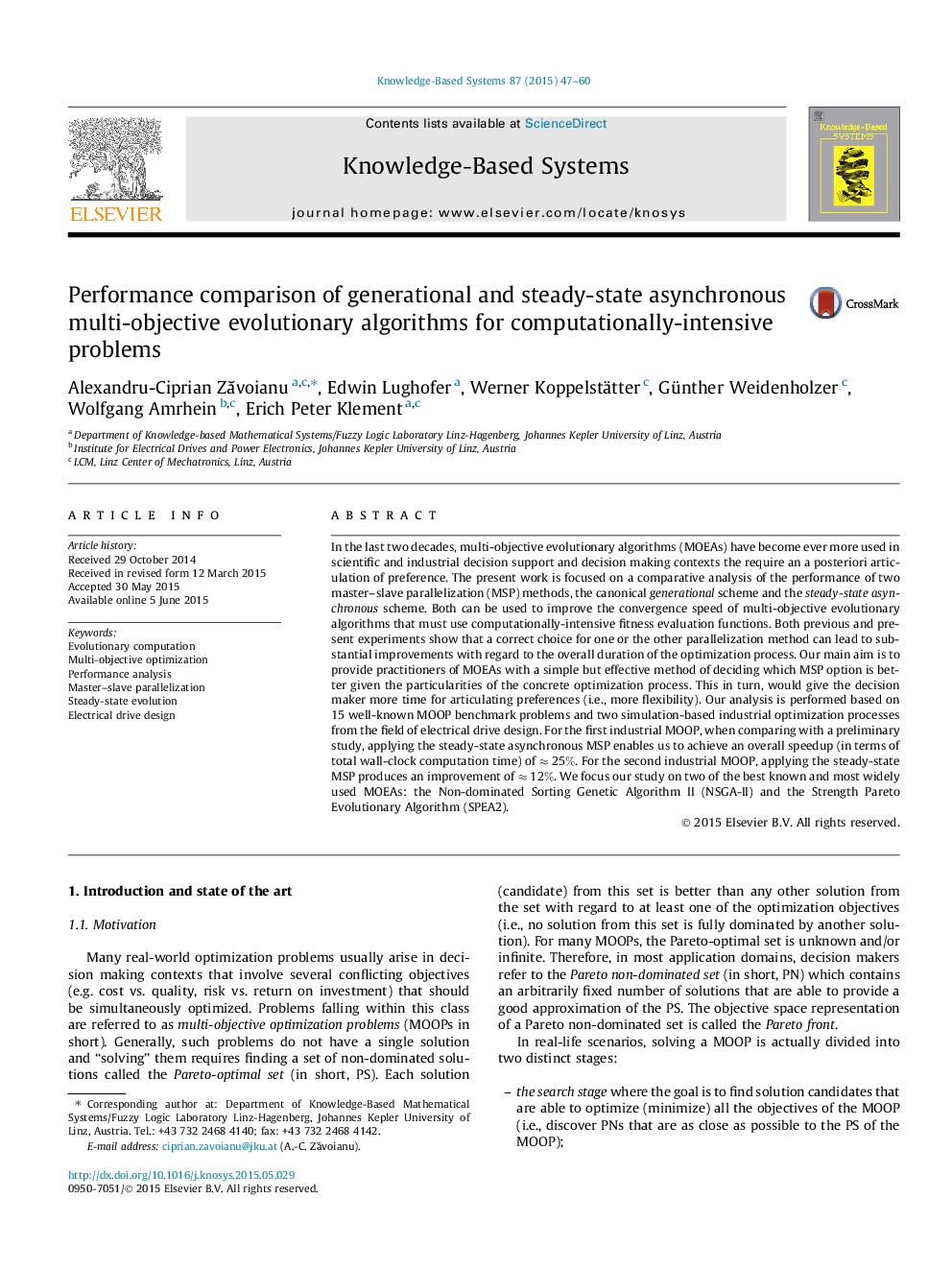| کد مقاله | کد نشریه | سال انتشار | مقاله انگلیسی | نسخه تمام متن |
|---|---|---|---|---|
| 402793 | 677005 | 2015 | 14 صفحه PDF | دانلود رایگان |
In the last two decades, multi-objective evolutionary algorithms (MOEAs) have become ever more used in scientific and industrial decision support and decision making contexts the require an a posteriori articulation of preference. The present work is focused on a comparative analysis of the performance of two master–slave parallelization (MSP) methods, the canonical generational scheme and the steady-state asynchronous scheme. Both can be used to improve the convergence speed of multi-objective evolutionary algorithms that must use computationally-intensive fitness evaluation functions. Both previous and present experiments show that a correct choice for one or the other parallelization method can lead to substantial improvements with regard to the overall duration of the optimization process. Our main aim is to provide practitioners of MOEAs with a simple but effective method of deciding which MSP option is better given the particularities of the concrete optimization process. This in turn, would give the decision maker more time for articulating preferences (i.e., more flexibility). Our analysis is performed based on 15 well-known MOOP benchmark problems and two simulation-based industrial optimization processes from the field of electrical drive design. For the first industrial MOOP, when comparing with a preliminary study, applying the steady-state asynchronous MSP enables us to achieve an overall speedup (in terms of total wall-clock computation time) of ≈25%≈25%. For the second industrial MOOP, applying the steady-state MSP produces an improvement of ≈12%≈12%. We focus our study on two of the best known and most widely used MOEAs: the Non-dominated Sorting Genetic Algorithm II (NSGA-II) and the Strength Pareto Evolutionary Algorithm (SPEA2).
Journal: Knowledge-Based Systems - Volume 87, October 2015, Pages 47–60
